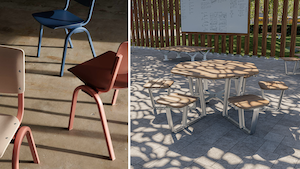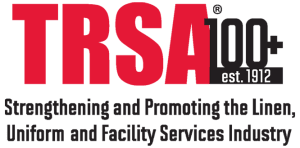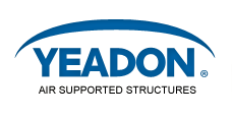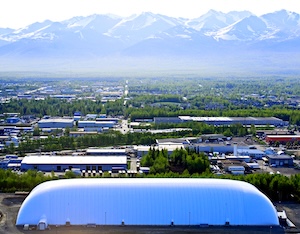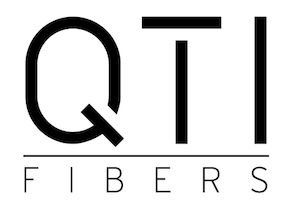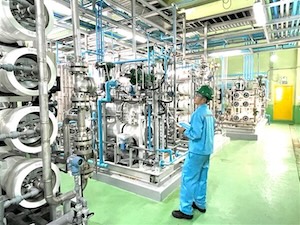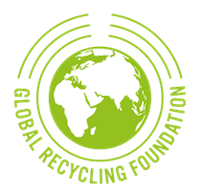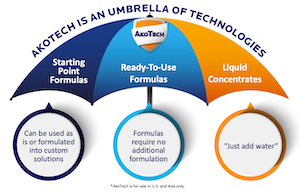 HO CHI MINH CITY, Vietnam — March 19, 2025 — At its second edition, the Vietnam International Trade Fair for Apparel, Textiles, and Textile Technologies (VIATT) has once again proven a vital trade platform for the global textile value chain. Taking place from February 26-28, 2025, the show concluded with resounding success, after attracting over 19,000 visits (more than 10-percent increase) from over 70 countries and regions (2024: 55 countries and regions). The fair also welcomed 463 exhibitors from 24 countries and regions, marking a nearly 13 percent growth compared to the previous year, while adding several new zones and a pavilion that offered potential for Vietnam’s development towards textile innovation and sustainability, and further integration with the global supply chain.
HO CHI MINH CITY, Vietnam — March 19, 2025 — At its second edition, the Vietnam International Trade Fair for Apparel, Textiles, and Textile Technologies (VIATT) has once again proven a vital trade platform for the global textile value chain. Taking place from February 26-28, 2025, the show concluded with resounding success, after attracting over 19,000 visits (more than 10-percent increase) from over 70 countries and regions (2024: 55 countries and regions). The fair also welcomed 463 exhibitors from 24 countries and regions, marking a nearly 13 percent growth compared to the previous year, while adding several new zones and a pavilion that offered potential for Vietnam’s development towards textile innovation and sustainability, and further integration with the global supply chain.
 Serving as a catalyst to connect the local market with the global stage, the fair was once again hosted by Vietnam’s Ministry of Industry and Trade (MOIT). “Among all the current industrial export products of Vietnam, the textile and garment industry accounts for 12 to 16 percent of the country’s total export turnover,” said Phan Thi Thang, deputy minister of Industry and Trade at the fair’s opening ceremony. “Facing favourable trends, along with 17 new generation free trade agreements (FTAs) Vietnam has signed that have taken effect, the country’s textile and garment industry targets export turnover of $48 billion by 2025, continuing to affirm Vietnam’s solid position in the global supply chain.”
Serving as a catalyst to connect the local market with the global stage, the fair was once again hosted by Vietnam’s Ministry of Industry and Trade (MOIT). “Among all the current industrial export products of Vietnam, the textile and garment industry accounts for 12 to 16 percent of the country’s total export turnover,” said Phan Thi Thang, deputy minister of Industry and Trade at the fair’s opening ceremony. “Facing favourable trends, along with 17 new generation free trade agreements (FTAs) Vietnam has signed that have taken effect, the country’s textile and garment industry targets export turnover of $48 billion by 2025, continuing to affirm Vietnam’s solid position in the global supply chain.”
Speaking at the fair’s close, Wilmet Shea, general manager of Messe Frankfurt (HK) Ltd., remarked: “VIATT 2025 exceeded expectations with its remarkable participation from key international players, particularly through the introduction of the European Zone and India Pavilion. The show has made significant progress compared to its inaugural edition, with growth in internationality, exhibitor and visitor numbers, and fringe event offerings. These advancements further cemented VIATT’s role as a gateway to increase business in ASEAN’s dynamic textile market, providing unparalleled opportunities for fairgoers to forge global partnerships, upgrade their supply chains and explore new markets.”
New offerings underscore Vietnam’s rising potential in design, technology and sustainability
Aligned with global trends, VIATT 2025 placed a strong emphasis on innovation and sustainability, reflecting the industry’s shift towards eco-conscious practices and cutting-edge technologies, and the growing demand for these in Southeast Asia. The debut Innovation and Digital Solutions Zone and Econogy Hub — the centralised zones for cutting-edge technologies and sustainable products and solutions — emerged as major highlights, underscoring the industry’s commitment to a more sustainable future, across the apparel, home, and technical sectors.
Exhibiting in Econogy Hub, Nguyen Tri Duc, Overseas Sales Department, Toyo Orimono, Japan, commented: “Econogy Hub has been an excellent platform for networking. It allows us to connect with potential clients and showcase our offerings. Over the past two days, we’ve seen a significant increase in customer interest in recycled fibers, and various eco-friendly products, with many proposing new design requirements to cater to market demands in Japan and Europe. Compared to last year, this edition has attracted a larger, more professional crowd, and the booths have been more captivating than ever.”
In addition to the numerous fabrics being showcased, more inspiration was on display at the inaugural European Zone, which showcased top-tier French fashion designs, the finest home textiles from Portugal, sustainable textiles from the UK, and more. By organizing a new display zone, the UK Fashion and Textile Association (UKFT) highlighted the craftsmanship of several premium British fabric mills.
“Vietnam’s consumer class is growing rapidly, and there’s a very strong manufacturing sector with sustainable, ethical facilities, with huge investments in technology and quality,” explained Daniel Connolly, senior executive, UKFT. “The UK has now got a free trade agreement with Vietnam, and has recently become part of CPTPP. Lots of British textiles are being turned into finished goods here. We’re very happy to partner with VIATT, and visitors have been pleasantly surprised that we’re exhibiting at just its second edition. The UK industry is also really happy that UKFT is here because Vietnam and Southeast Asia represent such an exciting, relatively new market.”
Exhibitors’ feedback
“We have brought fashion embroidery fabrics and polyester embroidery yarns, predominantly for stylish women’s wear. Our goal is to engage with garment manufacturers, brand customers, and local agents,” said Bao Jia Cheng, representative of Shaoxing Sunsmile Textile Co Ltd., China (Apparel Fabrics & Fashion). “Southeast Asia is undoubtedly a key focal point for the future evolution of Asia-Pacific’s economy, and I regard this exhibition as a crucial avenue for penetrating the Southeast Asian market. I’ve seen a promising visitor flow and good quality customers, and notably met interested parties from Vietnam, Thailand, India, and other parts of Southeast Asia.”
“We established a factory in Vietnam at the beginning of the year, due to its more favorable market environment and more developed supply chain than other Southeast Asian nations,” said Zhang Jian, Muye Home Fashion Vietnam Co Ltd., Vietnam (Home & Contract Textiles). “At VIATT, we’ve had considerable demand from local stores and wholesalers. I believe that Vietnam has significant consumer purchasing power as our prices have been well-received here, and our booth, which promotes finished products, has attracted a significant amount of foot traffic, indicating a good number of targeted customers.”
“Utilised by most global brands with mass-produced T-shirts or underwear, our tagless line is an alternative to heat transfer labels or sewn-in labels,” said Matthew Yates, Global Tagless director, Inkcups, USA (Technical Textiles & Textile Technologies). “It saves water and trees, with no carbon emissions. This is our first time exhibiting at VIATT, we’ve been very busy and absolutely made some promising leads. Our main customers are apparel, but we’re also in medical, furniture, jeans, and such. This kind of exhibition gathering different sub-sectors increases possibilities, because visitors say they can apply tagless to products I’d never really considered.”
Drawn by VIATT’s diverse and extensive offerings, nine buyer delegations from Europe, Hong Kong, Malaysia, Myanmar, Thailand, Vietnam, and the US sourced at the fair. Meanwhile, VIP buyers from renowned brands, including Adidas, Aeon, American Eagle, Club Monaco, IKEA, J Crew, Nike, MFG Sourcing, Muji, Lululemon, Welspun, and ZARA also met with exhibitors to further promote business exchange during the show.
Buyers’ experiences
“As a textile producer and retailer from Mexico, we’re primarily seeking garment suppliers,” said Eduardo Hernández Castillo, International Purchasing Manager, Avante Textil, Mexico. “I saw one of the fashion parades and for me it’s quite unique and fascinating. We also discovered innovative technologies, particularly in mélange yarns, as well as impressive advancements from Korea and Japan. We plan to return to VIATT next year to further develop our supplier network.”
“We are a home textiles company managing American clients’ orders in China,” said Dennis Macharia, Sourcing – Home Textiles China, Maaron International Procurements, China. “I’m planning to do all three days at this show, because I prefer sitting down with suppliers and having good conversations. There have been promising leads, especially Chinese suppliers who have already opened a good number of factories in Vietnam, and in India, Myanmar, and Indonesia. I have already found OEKO-TEX and BSCI certified suppliers at VIATT 2025, which are very important for our clients.”
“We focus on the markets of Vietnam, China, Korea and Europe, especially textile, handbag and footwear businesses — areas with high demand for zippers and copper metal accessories,” noted Chen Shen Hua, director, Kingly Copper, Vietnam. “Our main goal at VIATT is to find partners, learn new technologies, and expand our market presence. The fair has helped us connect with many potential partners, and open up opportunities for long-term collaborations. We look forward to returning next year to further expand our market reach or to showcase our new product lines.”
“I own Jossi, a fashion brand in Vietnam,” said Tran Thanh Tam, director, Thinh Phuc Development Co Ltd., Vietnam. “These seminars gave me more specific, in-depth knowledge in my field. They far exceeded my expectations in terms of the valuable insights into the prospects of Vietnamese textile businesses. In both domestic and international markets, there is a strong emphasis on sustainable fashion and eco-friendly materials. At the fair, I networked with domestic and international partners. For instance, I met the CEO of ECOSOI, the enterprise specializing in 100-perce t pineapple fibre.”
Beyond business interactions, VIATT 2025 offered a comprehensive fringe program designed to share trends, insights, and strategies with global industry players. Notable events included VIATT’s first-ever Interior Design Roundtable and Networking: Sustainable Interiors with Smart Textiles. The panel discussion was led by VDAS Design Association, highlighting the latest fabric, technology, and sustainability initiatives in the interiors sector. Another addition, the inaugural 2025 VCICS – Vietnam Investment Summit, aimed to unlock new business opportunities between China and Vietnam. Meanwhile, The Future of Sustainability in Vietnam’s Fashion Industry explored Vietnam’s design and sustainability, in collaboration with Redress, and including insights from leading enterprises such as ECOSOI, Passi, and sustainable phygital fashion brand KHAAR.
In total, 11 seminars took place during the fair, covering the themes of Design & Trends, Market Information & Business Strategies, Innovation/Technology & Solutions, and Econogy Talks, bringing international perspectives to educate and inspire the local market, as well as spotlighting Vietnam’s fashion and interior design landscape.
As for the highlights at the end of the value chain, two well-attended, eye-catching fashion shows from Vietnamese designer Vu Viet Ha and French designer Manix Wong, along with two fashion parades by designers from Thailand and Taiwan, also attracted the attention of global visitors. Meanwhile, three garment display zones highlighted the prevailing potential of functional and sustainable fashion, while a well-attended macramé weaving workshop enabled fairgoers to craft their own coasters.
Speakers’ insights
“Currently, the Vietnamese fashion industry is on the rise and pays a lot of attention to sustainability” said Ngoc Thu Le, Representative of Redress, Hong Kong. “During our panel discussion today, a common challenge that I noticed is educating the customers and shifting their buying behaviors. That’s why fairs like VIATT are important because they provide brands with a platform to reach out directly with customers and communicate the value of sustainable fashion.”
“My presentation was about applying AI in fabric inspection, the challenges and also the opportunities, while the panel discussion was more about sustainability,” said Professor Calvin Wong, CEO & Centre director, Laboratory for Artificial Intelligence in Design (AiDLab), Hong Kong. “The industry is eager for innovations, particularly for AI. Our inspection system especially has attracted very strong interest as there are many textile mills and garment manufacturers in Vietnam. I’m so satisfied with the number of visitors at our booth, we have met quite a few potential business partners, and of course we plan to come back next year!”
The Vietnam International Trade Fair for Apparel, Textiles and Textile Technologies (VIATT) is organised by Messe Frankfurt (HK) Ltd and the Vietnam Trade Promotion Agency (VIETRADE). For more details on this fair, please visit or contact viatt@hongkong.messefrankfurt.com.
VIATT 2026 will be held from February 26 – 28, 2026
Other upcoming shows:
- Intertextile Shenzhen Apparel Fabrics / Yarn Expo Shenzhen
- June 11 – 13, 2025, Shenzhen (Futian)
- Intertextile Shanghai Home Textiles – Autumn Edition
- August 20 – 22, 2025, Shanghai
- Intertextile Shanghai Apparel Fabrics – Autumn Edition / Yarn Expo Autumn
- September 2 – 4, 2025, Shanghai
- Cinte Techtextil China
- September 3 – 5, 2025, Shanghai
Posted: March 19, 2025
Source: Messe Frankfurt (HK) Ltd
 CHICAGO — March 18, 2025 — As NeoCon 2025 approaches, THE MART unveils an impressive lineup of showroom expansions, new leases, and 7th-floor exhibitors. New and notable, established and emerging, domestic and international brands are all taking part in the action across the NeoCon floors. The 56th edition of the show (June 9-11, 2025) offers design professionals an unmatched opportunity to discover cutting-edge products and resources, connect and network with industry leaders, and engage in thought-provoking, immersive activations and conferences.
CHICAGO — March 18, 2025 — As NeoCon 2025 approaches, THE MART unveils an impressive lineup of showroom expansions, new leases, and 7th-floor exhibitors. New and notable, established and emerging, domestic and international brands are all taking part in the action across the NeoCon floors. The 56th edition of the show (June 9-11, 2025) offers design professionals an unmatched opportunity to discover cutting-edge products and resources, connect and network with industry leaders, and engage in thought-provoking, immersive activations and conferences.
